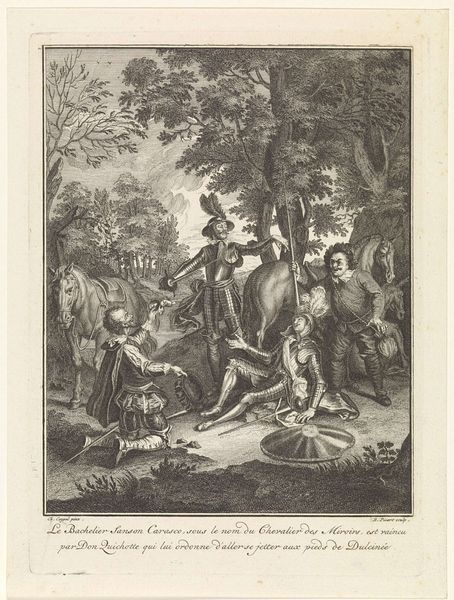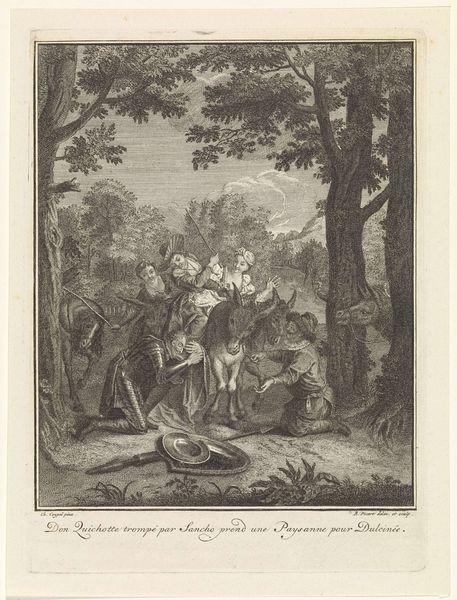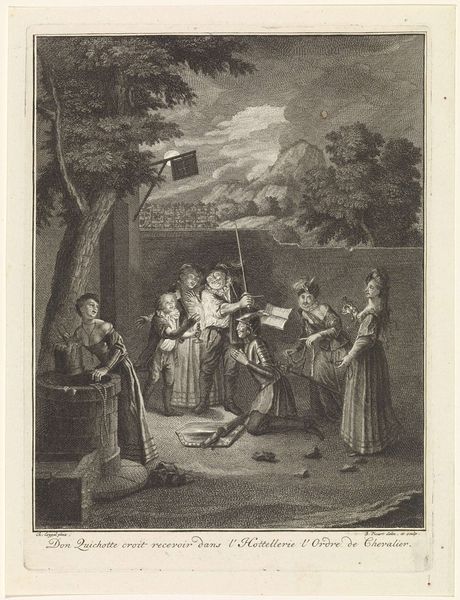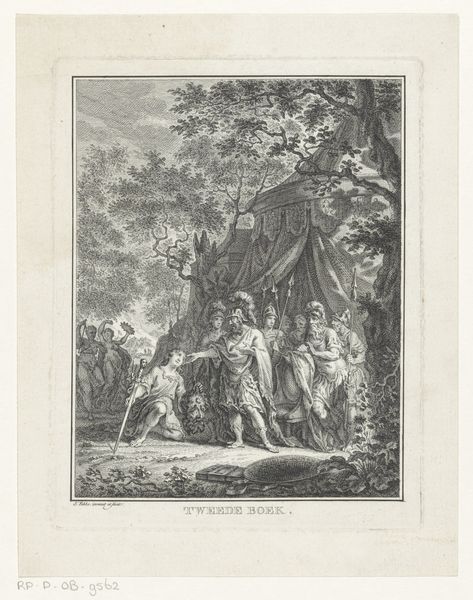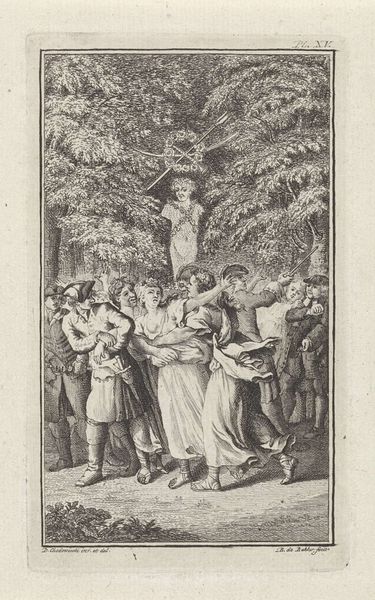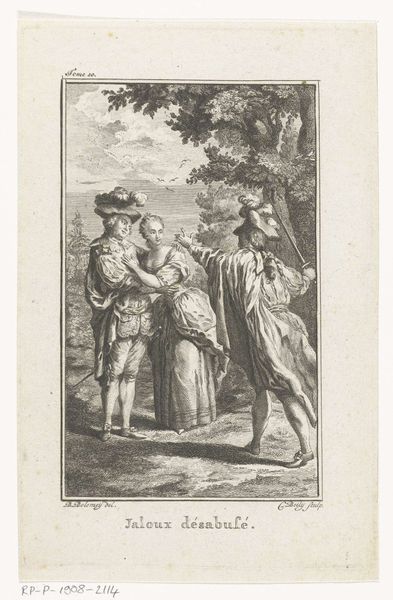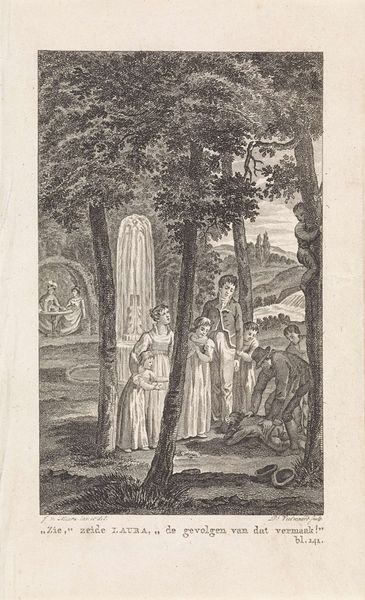
drawing, print, engraving
#
drawing
#
narrative-art
#
baroque
# print
#
caricature
#
old engraving style
#
caricature
#
figuration
#
pen-ink sketch
#
engraving
Dimensions: height 216 mm, width 160 mm
Copyright: Rijks Museum: Open Domain
Curator: The Rijksmuseum holds this compelling engraving by Bernard Picart, made between 1732 and 1733, titled “Don Quichot beschermt Basile.” Editor: It’s quite intricate! The eye dances across the composition trying to follow all the characters in this densely packed scene. A real theatrical staging, wouldn't you agree? Curator: Absolutely. Picart masterfully captures a pivotal moment from Cervantes' "Don Quixote," a story ripe with socio-political commentary about class, morality, and perception during that era. We see Don Quixote interceding on behalf of Basile. Editor: Look how Picart uses light and shadow! The stark contrasts define the forms and the almost frantic lines create a sense of drama, a Baroque flair through and through. The positioning of Don Quixote feels significant, almost as a rupture of that formal design! Curator: Right, he places Quixote squarely between Basile and what seems to be the established order—observe the surrounding figures with their expressions of bewilderment or disapproval. It hints at themes of justice versus societal norms. Editor: Tell me, looking closely, do you not sense a touch of caricature in the faces? Those exaggerated features and expressions border on the satirical. What commentary do you think it offered to the rising bourgeois? Curator: A crucial observation. The caricature undoubtedly critiques the established nobility but could simultaneously serve as a cautioning tale, playing into anxieties around social mobility and the blurring of class boundaries. Editor: Ultimately, this print is a potent example of the interplay between form and content. The Baroque dynamism mirrors the narrative's chaotic energy, while the semiotic elements within each face—each posture—speak volumes about the social climate of the time. Curator: Indeed, Picart's engraving allows us to not only appreciate the formal elements of Baroque art, but also to deeply reflect on its role as a historical mirror, reflecting—and refracting—the societal tensions of 18th-century Europe.
Comments
No comments
Be the first to comment and join the conversation on the ultimate creative platform.

